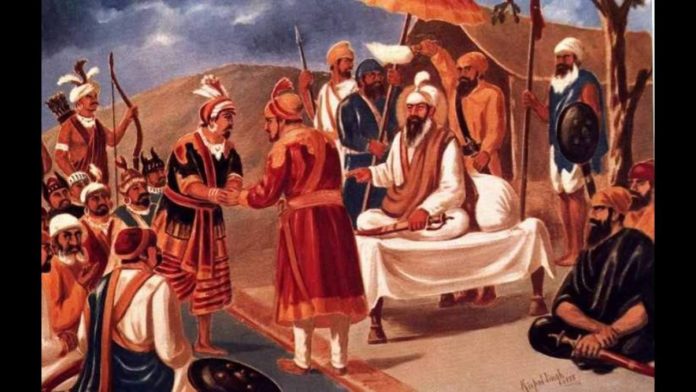The Ahom dynasty, which lasted for six centuries, fought the Mughal invaders successfully. None of our history books in schools talk about how the Ahoms never allowed the Mughals to make territorial acquisitions in the north East.
By Ashok N.R.
It is said that those who do not learn history are doomed to repeat it. If we look at the conflict with our neighbors and all the wars we have fought with the invaders, we see some common threads.
Our resistance to foreign invasions, when we have stayed together as a nation have resulted in humiliating defeats for the invaders, from Alexander to the British. We have fought with the best there were, and we have overcome them.
On the other hand, our willingness to accommodate invaders and betray our own have resulted in our humiliation that have made us seem like we are fit to be conquered or colonized. Many of our kings and emperors stood strong and resisted invaders and colonizers till they were betrayed by their own.
Take the Ahom dynasty for instance.
This dynasty, which lasted for close to six centuries from 1228 to 1826 successfully resisted the expansion of the Mughal Dynasty in the North East. Not once, not twice… but all of eighteen times between 1615 and 1682. This was one war more than the generally publicized seventeen times of Mahmud of Ghazni. Of course, that our text books don’t even talk about this empire is a different matter altogether.
The Mughals, with their imperialistic tendencies, viewed large regions towards the east of their kingdom as being their territory. They repeatedly attacked the Ahom Kingdom multiple times to feed their territorial aspirations. Obviously this was resented by Ahoms, who retaliated with overwhelming force and ferocity that the Mughals did not expect. The Mughals suffered humiliating defeats, repeatedly getting badly beaten by the Ahoms. To make matters worse, many of the Mughals were enslaved by the Ahoms after losing these battles.
Not only did the Ahoms manage to stave off major invasions, but the Ahoms also ended up conquering a part of the Mughal kingdom up to the Manas River, expanding their territory. The Ahoms went to great lengths to establish their might. So much so, they offered asylum to some chieftains who wanted to get away from Shah Jahan’s subedar.
Because of the military might of the Ahoms, the Mughals were very cautious about ruffling any feathers of the Ahoms.
The only time, in 1663, when the Ahom Dynasty king JayadhwajSingha, as anxious for peace as the Mughals, signed a treaty with them. He ended up sending his daughter and niece to the Mughal harem. It does sound like a familiar story we’ve heard multiple times before.
But, this was quickly set right by his successor ChakradhwajSingha, who made up his mind to fight the Mughals laying waste the peace treaty signed by the previous king. Not only did he win the war, but also managed to bring back all his Assamese captives held by the Mughals. The defeat was so comprehensive that the Mughals never recovered from this onslaught.
The strengths of the Ahoms lay in multiple areas. They successfully united diverse races and tribes in and around the Assamese region to build a single massive empire. These races included the Chutiyas, the Morans,the Borahis, the Kacharles, the Mirls and other local people professing Hindu religion.
Military service was compulsory for all able-bodiedmen, lots being drawn from each levy, establishing a strong military force. They also developed a strong river-specific navy that paid heavy dividends in their war with the Mughals, supported ably by building and repairing docks.
This was backed up by effective strategies like a policy-driven command, diplomacy, effective usage of geographic features to drive guerilla warfare and designing of vessels to accommodate the width and twists of the Brahmaputra River.
Today, in 2020, we are seeing a similar situation. Article 370 and 35A, temporary provisions in our constitution, which we, till today, accommodated and come to accept as a way of life, used to humiliate an entire population. An enemy, who has territorial aspersions even after having been humiliated and sent back four times, has abused these anomalies in our constitutions. A small part of the internal population, not in line or united with the goals or the strongest traditions of our country has held us to ransom as a result.
We are also seeing some heartening signs. A growing number of fiercely nationalistic Indians across states and religions,are unafraid to wear their Indian identity on their sleeves. Not only have we successfully beaten the enemy, but we have exercised our rights over what was rightfully our territory. We are seeing a committed and developing military that is more policy driven and customized to our national defense requirements than the requirements of multinational companies’ profits. The strength to roll back treaties and policies that don’t do the country any good is actually showing up today. And we are leveraging diplomacy to drive a new and resurgent India into the 21st century.
Now how we carry this forward and take it to a logical conclusion is for the politicians to decide. But it is for the people of India to support and drive this.








